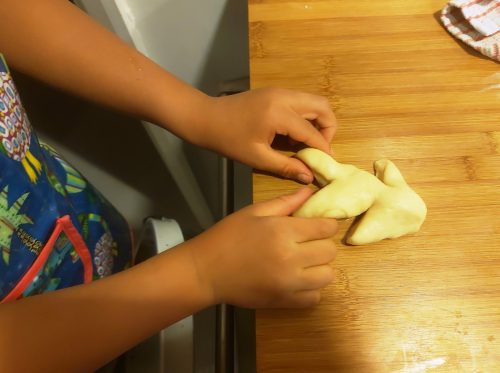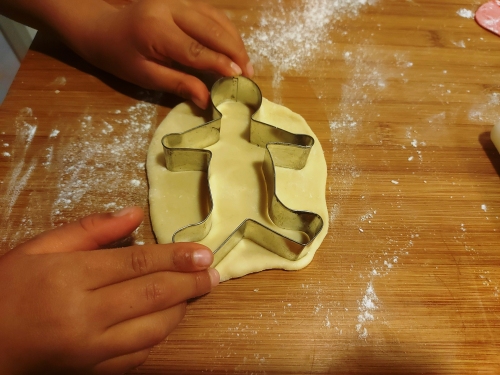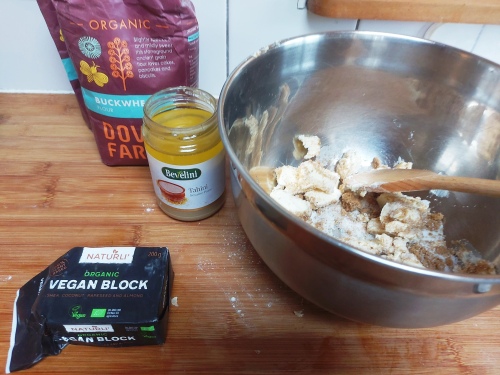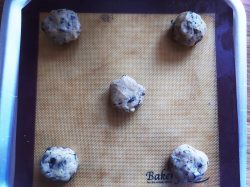This is my first attempt at making these. They’re quite crude, but it was a fun project to do with my eight-year-old. I first heard about these as “mannele brioche”, little enriched dough buns from the Alsace baked for St Nicholas’s Eve, 5 December. Turns out they’re more widespread than that, existing with various names and variations throughout a wide band of central Europe from Luxembourg to Switzerland.
The most common name is stutenkerl, a German word made from combining stuten, rich dough, with kerl, a word for “lad” or “guy”. Another name used in other parts of Germany is weckmänner, with weck a type of long bread role and männer meaning man, small man or young man. An alternative translation seems to be watchman, with weck related to the English word wake, as in awake. Or something. I don’t speak German at all, and although my dad does, he wasn’t too sure either, so I’m blundering around online looking at other recipes and dictionaries. Any native German speakers reading this please do comment! I get the impression German is as full of regional dialects and historical slang as Italy (a country I know a little, and the first home of this blog), which is unsurprising, given how both are relatively modern countries created from unification of various states with their own cultures and linguistic histories.*
The word mannele, meanwhile, I assume is related to the word “mannequin”, which is just a Frenchification of the Dutch manikin, meaning a little man or dwarf.
As well as being part of the St Nicholas’s Day tradition in some areas (and can be known as Klausenmänner), they’re also made as part of celebrations for St Martin’s Day, Martinmas, 11 November, in others (and known as Martinsmänner). Either way, they’re enriched dough figures and any resemblance to St Martin or St Nicholas – either the 4th century saint of Greek descent or the jolly fat man in red from modern times – takes a fair amount of imagination. Instead, just see them as fun little edible figures, like a gingerbread men, and as such perfect for kids. Traditionally these would be left out as a snack for St Nicholas on the night of 5 December, and he’d leave gifts. Today, for many of us, all of these other traditions have been subsumed into the Coca-Cola Santa, who’s given a yucky supermarket-bought mince pie or whatever, on 24 December.
You can make them by using a gingerbread cookie cutter, or you can cut and shape a sausage of dough into a figure, or you can cut a template and cut them out with a knife. If you look at some of the professionally, or more expertly, made ones online, some have lovely details like scarves and boots, along with a pipe. Me and the boy made ours with the first two techniques, and they’re pretty basic. But there’s something quite atavistic about them. It’s easy to imagine dough being shaped into basic figures and used as votive offerings in ancient times so while we scoffed them like breakfast brioche, there was a nice sense of continuity, eschewing all the barbarity of modern consumerist Christmas.
1. Warm the milk to about body temperature (37-ish C).
2. Stir in a tablespoon of the sugar then sprinkle over the yeast and leave to froth up.
3. Put all the other ingredients in a large bowl, or the bowl of a mixer.
4. Pour in the yeasty milk, then bring together. It’ll be quite a damp mix as, although there’s not much actual liquid (milk), there is all that melted butter and eggs.
5. Either form a shaggy dough then turn out and knead by hand until smooth, or use a mixer with a dough hook.
6. To give the fats a chance to firm up a bit, put the dough in the fridge for an hour or so.
7. Take out of the fridge, then leave to prove until doubled in size.
8. Turn out the dough and knead briefly to distribute the gases.
9. The total dough weight is about 1040g. Divide this equally and shape into balls. I did 12 balls at 86g each. Or go for 10 at 104g for larger little men.
10. Preheat the oven to 180C.
11. Now, you shape them. You can roll the dough and use a cookie cutter, or draw a template and freestyle, or you can roll the balls into sausage shapes, then using a dough cutter, knife or even kitchen scissors, snip like this:
12. Doing it in a bit of a rush on Saturday evening with my eight-year-old son, we did the cookie cutter and sausage technique, just to try, as it was our first time making these.
13. Tweak out the limbs, shape the head a bit, then brush with milk and decorate with currants or raisins as you would a gingerbread man.
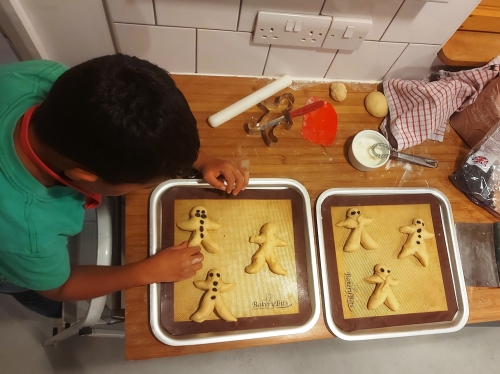
14. Place your little dough men on baking sheets lined with parchment or silicon.
15. Glaze with egg, or milk, or a mix.
16. Bake for about 20 minutes or until nicely golden brown.
17. Cool on a rack.
18. Enjoy, but remember to leave one for St Nicholas. Or indeed St Martin, if you do them then, though I’m not sure if he visits houses and gives gifts.
Oh, and here are some other St Nicholas day food I’ve covered on here: a British steamed pudding; speculaas from the Netherlands; and Polish honey cookies. Ergo, it’s not all about mince bloody pies at this time of year!
* Italy was unified in 1861. The German Empire was only formed in 1871. Never mind East and West Germany only re-unifying in 1990.






